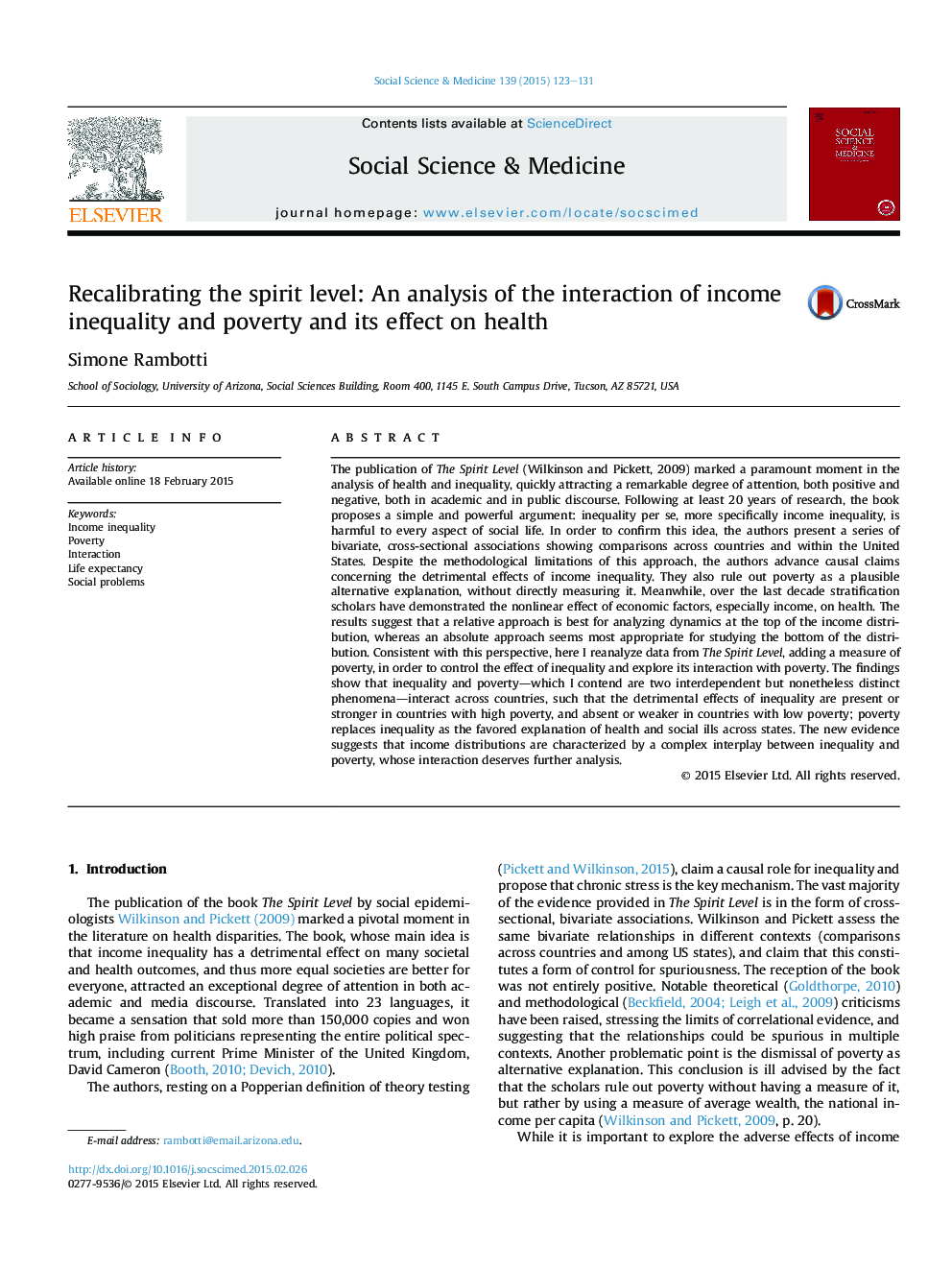| Article ID | Journal | Published Year | Pages | File Type |
|---|---|---|---|---|
| 7332064 | Social Science & Medicine | 2015 | 9 Pages |
Abstract
The publication of The Spirit Level (Wilkinson and Pickett, 2009) marked a paramount moment in the analysis of health and inequality, quickly attracting a remarkable degree of attention, both positive and negative, both in academic and in public discourse. Following at least 20 years of research, the book proposes a simple and powerful argument: inequality per se, more specifically income inequality, is harmful to every aspect of social life. In order to confirm this idea, the authors present a series of bivariate, cross-sectional associations showing comparisons across countries and within the United States. Despite the methodological limitations of this approach, the authors advance causal claims concerning the detrimental effects of income inequality. They also rule out poverty as a plausible alternative explanation, without directly measuring it. Meanwhile, over the last decade stratification scholars have demonstrated the nonlinear effect of economic factors, especially income, on health. The results suggest that a relative approach is best for analyzing dynamics at the top of the income distribution, whereas an absolute approach seems most appropriate for studying the bottom of the distribution. Consistent with this perspective, here I reanalyze data from The Spirit Level, adding a measure of poverty, in order to control the effect of inequality and explore its interaction with poverty. The findings show that inequality and poverty-which I contend are two interdependent but nonetheless distinct phenomena-interact across countries, such that the detrimental effects of inequality are present or stronger in countries with high poverty, and absent or weaker in countries with low poverty; poverty replaces inequality as the favored explanation of health and social ills across states. The new evidence suggests that income distributions are characterized by a complex interplay between inequality and poverty, whose interaction deserves further analysis.
Related Topics
Health Sciences
Medicine and Dentistry
Public Health and Health Policy
Authors
Simone Rambotti,
